Perineural spread of tumour is a form of local invasion in which primary tumours cells spread along the tissues of the nerve sheath. It is a well-recognised phenomenon in head and neck cancers.
On this page:
Terminology
An important distinction has to be made between perineural invasion (PNI) and perineural spread (PNS). The former is a histological finding of tumour cell infiltration or associated with small nerves that cannot be radiologically imaged, while the latter is macroscopic tumour involvement along a nerve extending away from the primary tumour; this can be radiologically apparent. A third term, neurotropism, simply means that a tumour has an affinity for growth along nerves.
Pathology
Perineural tumour spread is more frequently associated with 1,2,5:
- mucosal/cutaneous squamous cell carcinoma
- oral cavity/laryngeal (2-30%) > cutaneous (3-8%)
- most common overall 5
-
salivary gland carcinoma
- adenoid cystic carcinoma (highest incidence per individual tumour 5)
- mucoepidermoid carcinoma
- mucosal/cutaneous basal cell carcinoma (2-5% demonstrate perineural tumour spread) 4
-
melanoma
- 0.8 - 2.6% demonstrate perineural spread8
- 65% are desmoplastic subtype
- 0.8 - 2.6% demonstrate perineural spread8
- lymphoma
- sarcoma
- meningioma (rare) 6
Radiographic features
MRI
Signs on MRI suggesting perineural tumour spread are:
- nerve thickening
- widening of the neural foramen
- loss of the fat surrounding the nerve
- abnormal perineural contrast enhancement
MRI can depict perineural tumour spread with a sensitivity of 95%, that falls to 63% regarding the entire spread's map. The presence of perineural tumour spread can be determined but for deducing its extent, cautious analysis and patterns of enhancement may be needed 9.


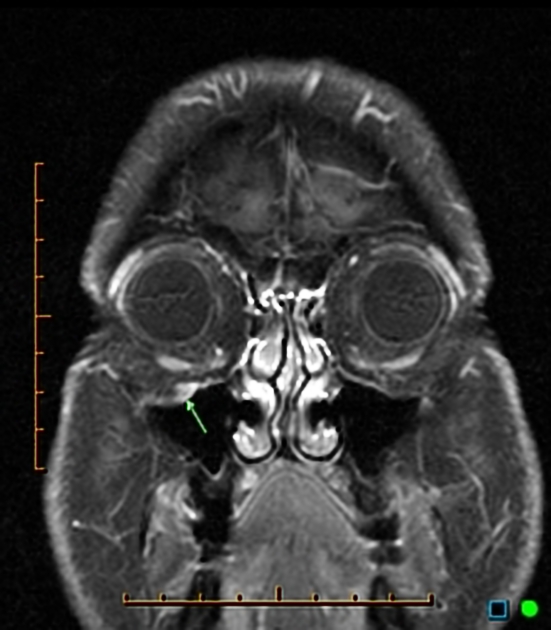
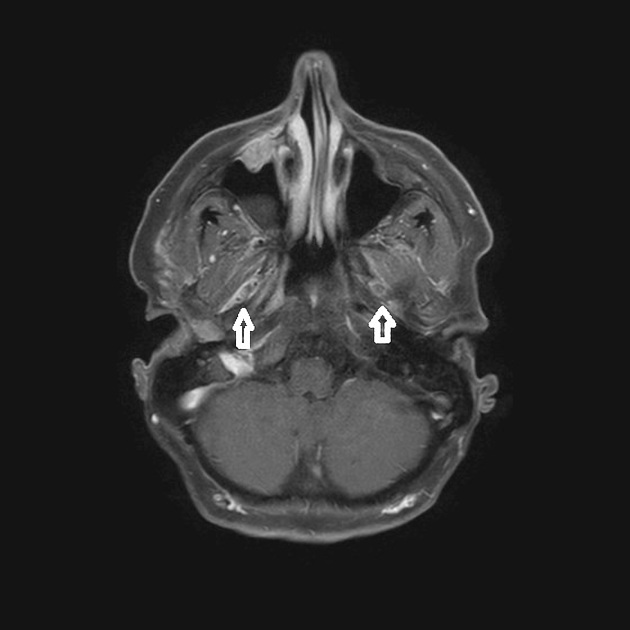
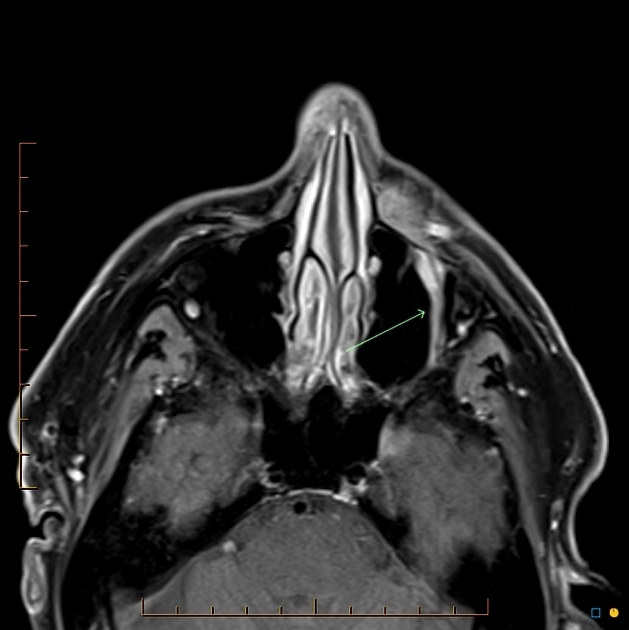
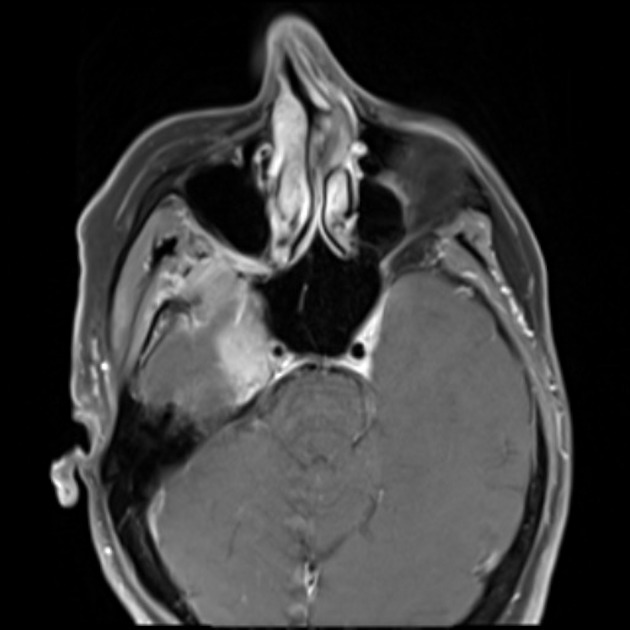
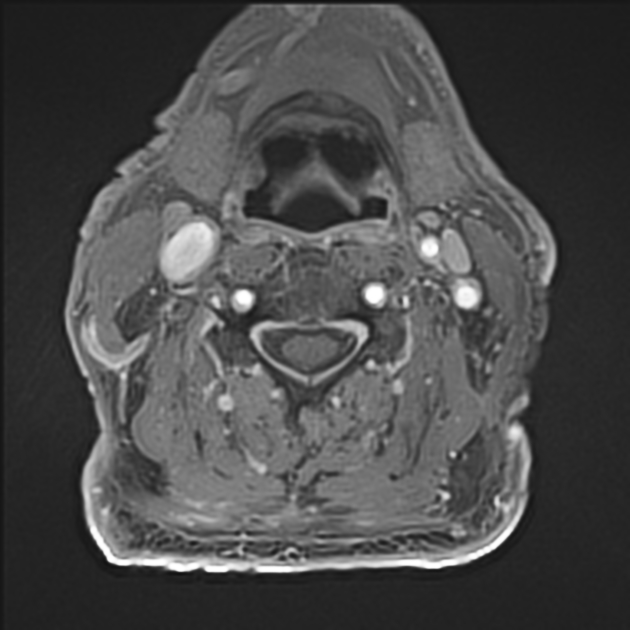
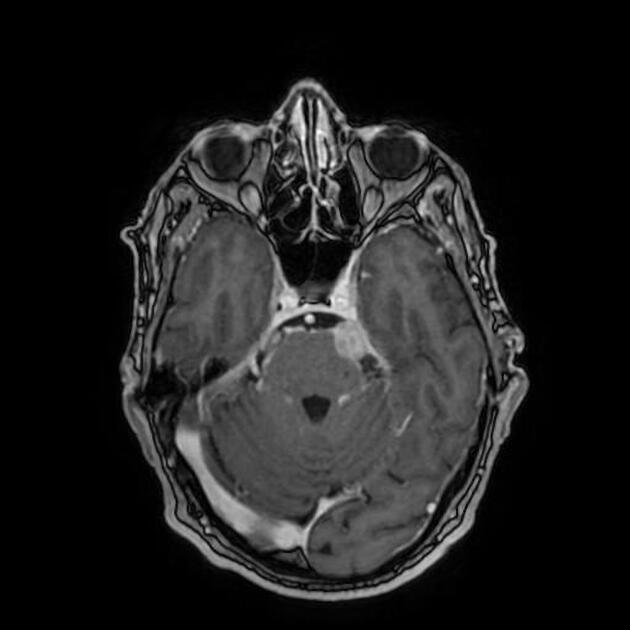


 Unable to process the form. Check for errors and try again.
Unable to process the form. Check for errors and try again.